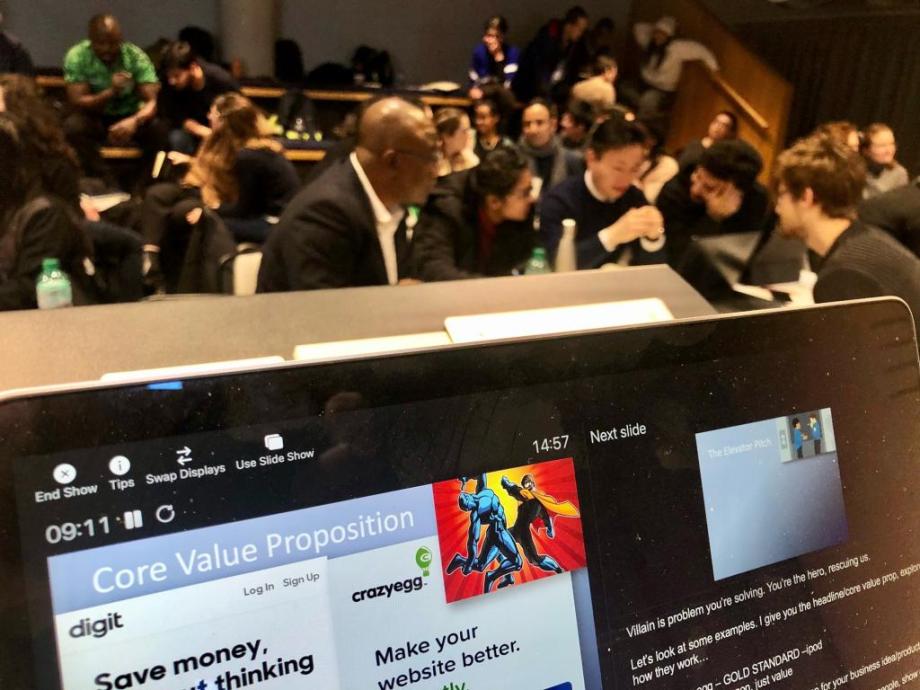Simon Hall writes...
Whenever I teach any form of communication, I usually have one starting point.
It’s critical, indispensable, absolutely essential if you want your message to make a mark…
And it saves you a lot of fuss, hassle and work as well.
What is it? The answer is…
- Being completely clear on your story
I know that might sound simple, but believe me it’s often forgotten.
And even by those who are supposed to know about communication.
In my BBC days, I was continually amazed by how many reporters would go out on a job…
And desperately cast around, throwing questions at a range of increasingly baffled people, until they struck on something that felt like a story.
That wasted their time, the cameraman’s time, the producer’s time, everyone’s time…
And made for a very stressful and tiring experience as well.
I had a different approach.
I was clear on what the story was before I got to a location.
That meant every interview required only a couple of questions…
We needed to film only about 15 or 20 minutes of pictures…
The edit was simple and straightforward…
The producer was happy…
The audience understood the point of the story…
In short, it was a win, win, win and win some more.
All because of being clear on what I wanted to communicate before I started putting it together.
So, how do you go about being ruthlessly clear on your message before you do anything else, the starting point you should look for?
The answer is the headline, or core value proposition.
When I was teaching Commercial Communication to some of the brilliant students on the Enterprise Tech programme, part of Cambridge University Judge Business School last week…
The first thing we looked at was the core value proposition.
It’s a way of summing up what you have to say in no more than 10 words.
For example, with that lecture, the headline value proposition could be:
- Master the essentials of business communication in one hour
By being clear on that before I started putting the session together, I knew exactly what I needed to include, nothing more, nothing less.
The students got everything they needed, nothing more, nothing less.
None of my time was wasted, none of their time was wasted…
The hour went beautifully, and we were all very happy afterwards.
For another example of the power of the core value proposition, this week I was asked to teach a course at an eminent university overseas.
I needed to get it together in just a couple of days, which was quite a challenge.
So, where did I start?
With the value proposition, naturally.
The course was to help high achieving degree students with applications for Master’s and PhD programmes.
They often struggle with knowing what to include in the submission, and how to write it.
It took just a few minutes to come up with the core value proposition for the workshop:
- Create a compelling higher degree application, from content to style
Which again told me exactly what I needed to put in the course…
And help to make sure I could compile it in just the two days I had.
As to how it goes, I’m feeling confident, but we shall see!
In summary, the lesson of those two different experiences…
And courtesy of some of my less able former BBC colleagues…
If you really want to make a mark with your message, whether a report, presentation, lecture course, or whatever…
Always be 100% clear on what you want to get across BEFORE you start to put it together.



